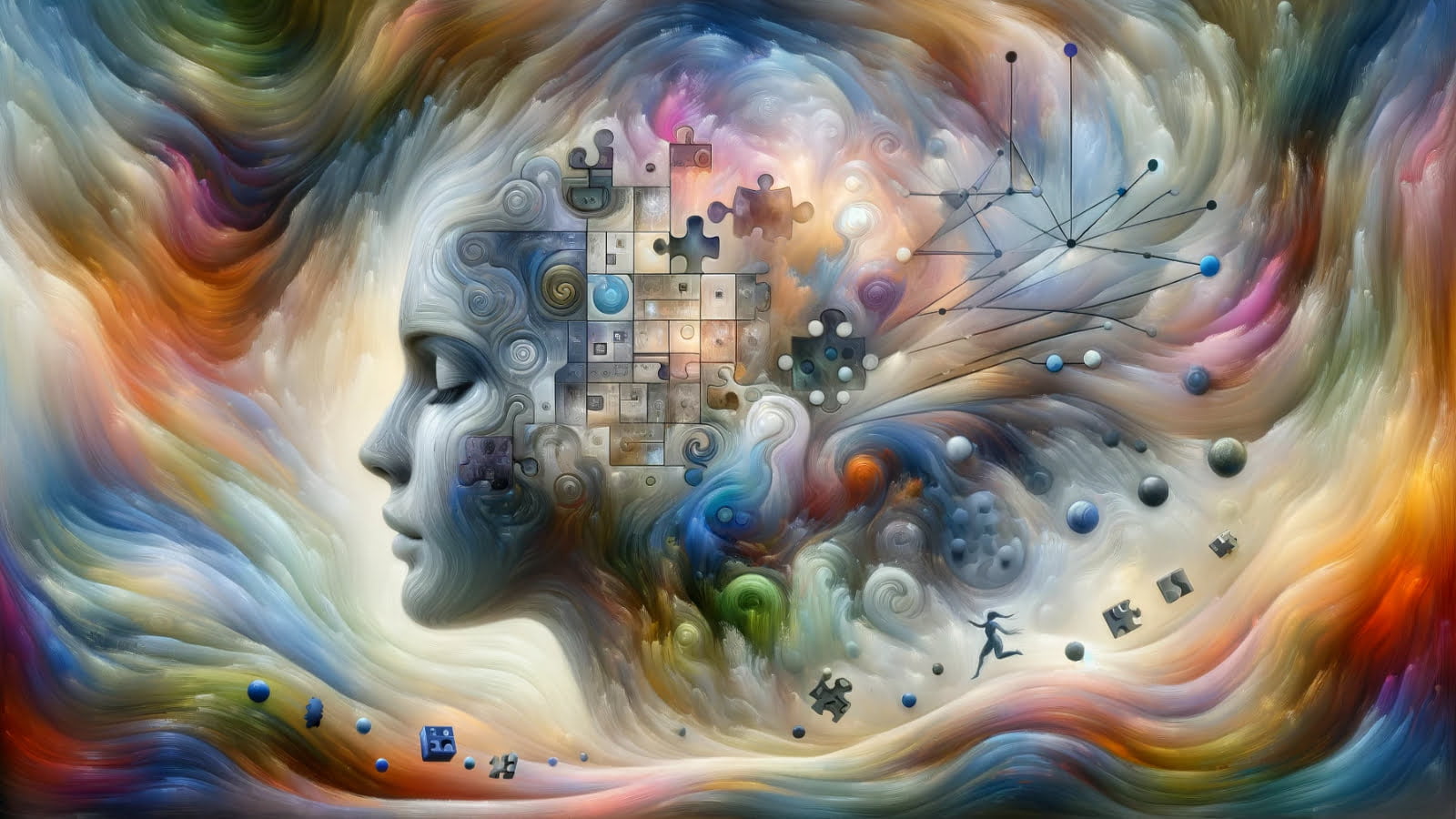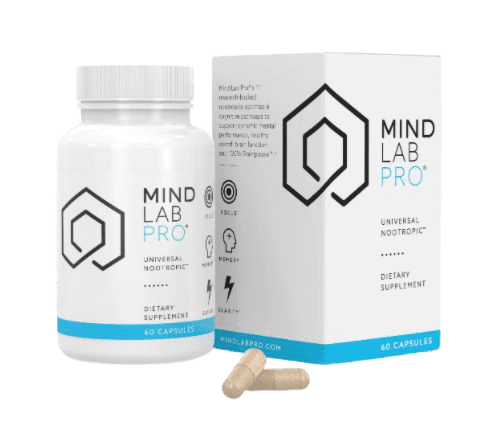
Before moving on to how a stroke can affect working memory, we first examine what a stroke is, how to recognize its signs and symptoms, and what common memory loss is. We discuss the top brain exercises for memory and stroke rehabilitation and recommend our picks for the best nutritional supplements to support memory and mental clarity.
Have you or a loved one recently suffered from a stroke? Are you finding it hard to recover your memory? Disruption of the working memory following a stroke is a common occurrence and gaining this function back can be difficult.
Table of Contents
We’ve researched the best methods and brain exercises to try, to improve memory and help with the recovery after a stroke. These range from simple board games to memory rehabilitation exercises to compensation strategies, and will hopefully guide you in the right direction to finally gaining mental clarity back.
What is a Stroke?
A stroke occurs when the blood supply to a part of your brain is reduced or interrupted. This prevents brain tissue from getting oxygen and the nutrients it needs and leads to brain cells dying within minutes.
It is treated as a medical emergency and getting treatment quickly is vital to preventing brain damage and further complications. These treatments can also help prevent disability as a result of a stroke.
There are two different types of stroke. An ischemic stroke occurs as blood clots or another set of particles block blood vessels leading to the brain. Fatty deposits are known as plaque and build up and cause blockages by building up in the blood vessels.
A hemorrhagic stroke is when a blood vessel completely bursts inside the brain. Blood starts to build up and this damages the brain tissue in the surrounding area.
What are the Signs and Symptoms of a Stroke?
Knowing the signs and symptoms of a stroke could potentially save someone’s life. Fast treatment is key to lessening any brain damage and to get this treatment you need to know what you’re looking out for.
- Sudden numbness or weakness of the face, leg, or arm (paralysis). This is commonly on one side of the body.
- Sudden trouble seeing out of either one or both of your eyes.
- Sudden confusion or difficulty understanding basic speech.
- Severe headache without there being a known cause.
- Trouble walking or speaking.
- Slurring your words.
- Loss of balance.
- Dizziness.
- Lack of coordination.
If you notice any of these symptoms, you need to think ‘FAST’.
- Face: Ask the person if they can smile and see if one side of the face droops.
- Arms: Ask the person if they can raise their arms and see if one arm drifts downward.
- Speech: Ask the person to repeat a phrase and see if the speech seems slurred or strange,
- Time: If you notice any of these signs, call 911.
What is Memory Loss?
Memory loss is not only limited to dementia and Alzheimer’s disease but several conditions can cause adults to experience it in their lifetime.
A certain degree of problems with memory and a modest decline in thinking skills comes with aging but when there are significant changes to memory that could be linked to a disorder or Alzheimer’s disease, it becomes more serious. Moreover, some memory problems can be the result of curable conditions.
Memory loss can also be a result of mild cognitive impairment. When this is the case, there is usually a notable decline in thinking skills but doesn’t stop you from performing everyday tasks. This can sometimes also lead to dementia.
There are also some reversible causes of memory loss such as certain medications, a minor head injury, a vitamin deficiency such as Vitamin B-12, an underactive thyroid, alcoholism, emotional disorders, or brain disease. Most of these conditions can be treated.
It’s important to always get a proper diagnosis when it comes to memory loss so that you can find appropriate treatment.
Furthermore, the brain exercises we provide in this article are a great way to exercise your brain and improve your memory with aging. Therefore, although your memory might seem fine, it’s a good idea to include them in your daily routine to minimize the chances of developing memory loss later in life.
Memory Loss After Stroke Recovery
Although we’ve touched on what general memory loss is, when a person has a stroke, this can also impact the part of the brain which contributes to the working memory. This impacts the brain’s ability to hold onto important information.
Fortunately, cognitive rehabilitation and the brain exercises we will be exploring in the next section can improve working memory following a stroke. Cognitive rehabilitation means retraining cognitive functions.
The brain can heal after injury and rewire itself. This process is called neuroplasticity, and it’s how stroke patients relearn their skills.
Neuroplasticity is activated through massed practice. This means to practice a skill over and over again. The brain adapts to the activities that you practice frequently and attempts to improve those skills by strengthening the neural pathways used to perform such activities.
Recovering memory following a stroke involves the massed practice of memory-specific brain exercises (such as the ones that MyBrainTrainer provided), but it’s also worth exploring with a Speech-Language Pathologist. These are professionals who can identify any cognitive impairments you may have following a stroke. They can then create a personalized rehabilitation program that targets your needs.
Best Brain Exercises for Memory and Stroke Recovery
- Memory Rehabilitation Exercises
- Alphabetizing Sentences
- Counting Money
- Visual/Spatial Processing Games
- Mnemonics
- Brain Teasers
- Puzzles
- Task Sequencing
- Hangman or Simple Word Games
- Board Games
- Meditation
Memory Rehabilitation Exercises
These types of exercises encourage neuroplasty and improve basic skills. One of these includes a card game called concentration. Concentration is a memory-intensive exercise.
To play concentration, you place several pairs of cards face down and flip them over two at a time. When you find two matching cards, you can leave them facing up. Limiting or increasing the pairs of cards in the game can either reduce or intensify the exercise.
Another game in which you can play is called Simon. Simon is an interactive game and involves you memorizing certain sequences. Visual memory skills are required to memorize the sequence which has been illuminated by color.
Alphabetizing Sentences
This can help with analytical reasoning. All you need is paper, a pen, and a reading source. Simply take a sentence, write it down, and then re-write it again but put the words in alphabetical order.
Counting Money
This can help with quantitive reasoning and all you need is a handful of coins. Pop these coins on a table, aim to have around 10-20 different coins, and then count the total value. This will stimulate the brain and help with cognitive ability.
Visual/Spatial Processing Games
Visual and spatial processing is key to cognitive therapy following a stroke. This will include tasks and activities which challenge you to identify a visual difference and where this difference is positioned in a certain space.
Mnemonics
Memory loss can be improved through mnemonic techniques. If it is common names of items or important dates and people you are forgetting, making up a simple rhyme could strengthen memory.
Brain Teasers
Simple brain teasers are a great way of challenging analytical and quantitative reasoning. Examples of brain teasers include Sudoku, word searches, and crosswords.
Puzzles
Puzzles are a great way to reinforce connections between cells in the brain. They can boost short-term memory following a stroke and can help stroke survivors recognize shapes, boost hand-eye coordination and improve their ability to solve problems.
Task Sequencing
If after a stroke you find it overwhelming recalling what to do when it comes to going to bed, for example, task-sequencing exercises can help.
List the steps involved in completing different tasks on a piece of paper, which can include tasks such as getting undressed or brushing your teeth. Cut these steps out and then pop them on the table and put the tasks in order.
Hangman or Simple Word Games
This is a great way of improving basic communication skills following a stroke. The aim is to form words by guessing letters. As you guess the letters, this can offer reminders about common phonics cues that might be able to strengthen reading and spelling skills.
Board Games
Playing board games is a very common activity for those who have suffered from a stroke. This is because they often use maths skills, require you to plan and make you put together simple words. It’s also a great activity when the family is visiting during recovery.
Examples of board games that strengthen brain activity include Checkers, Rush Hour, Connect-4, Scrabble, Monopoly, Rummikub, Mahjong, and memory-matching games. Board games can also promote the use of a range of cognitive skills such as problem-solving and can even alleviate boredom and stress.
Meditation
Meditation has been proven to help improve cognitive function in stroke patients, whilst also alleviating stress and anxiety. It improves attention span, mental flexibility, and how you process information.
You can use apps or YouTube videos to help with the meditation or simply pop on some relaxing music. Redirect your thoughts to one positive thing and this can clear any confusion or stress and promote a clear mind.
Compensation Strategies
Compensation strategies are more to do with how you live your life after a stroke to improve memory, rather than specific brain activities.
For example, you could use a reminder app on your phone to remind you of important events, set a daily routine, simplify common everyday activities such as cooking less complicated meals or make lists to ensure you remember things like groceries.
Product Recommendation
Though we have gone through the best brain exercises for memory and stroke recovery, if you feel you need an extra boost to gain back mental clarity and alertness, dietary supplements are a great addition. Below we’ve listed a couple of our favorites.
Mind Lab Pro

The Mind Lab Pro was designed to be introduced to your daily routine to help improve mental clarity, focus, mood, and overall brain health.
It guarantees to unlock your ‘A’ game and help you gain back confidence for memory and stroke recovery. After a stroke, this dietary supplement will help you become your sharpest and most productive self in no time at all.
It has been subjected to rigorous double-blind, placebo-controlled trials and is scientifically proven to work. After taking your 2-4 capsules daily, in just 30 minutes, you should begin to experience its benefits.
Pros
- Works in 30 minutes
- Helps you gain back the confidence following a stroke
- Sustainable and natural
- Stimulant-free
Cons
- There are possible side effects and these include nausea, headaches, and possible disturbed sleep.
Conclusion
We hope by reading this article you have gained a better understanding of what the best brain exercises are for memory and stroke recovery. While spontaneous memory recovery following a stroke is possible, rehabilitation and incorporating brain exercises into your life is the best way to improve the outcome and gain your memory back.
The cognitive training exercises above need to be practiced regularly to see results and if you are still struggling following a stroke, consider exploring dietary supplements like those mentioned above.
Additionally, consider researching a speech-language pathologist for the best results, and as long as you know you are including brain therapy regularly in your day-to-day life, your chances of recovery remain high.
